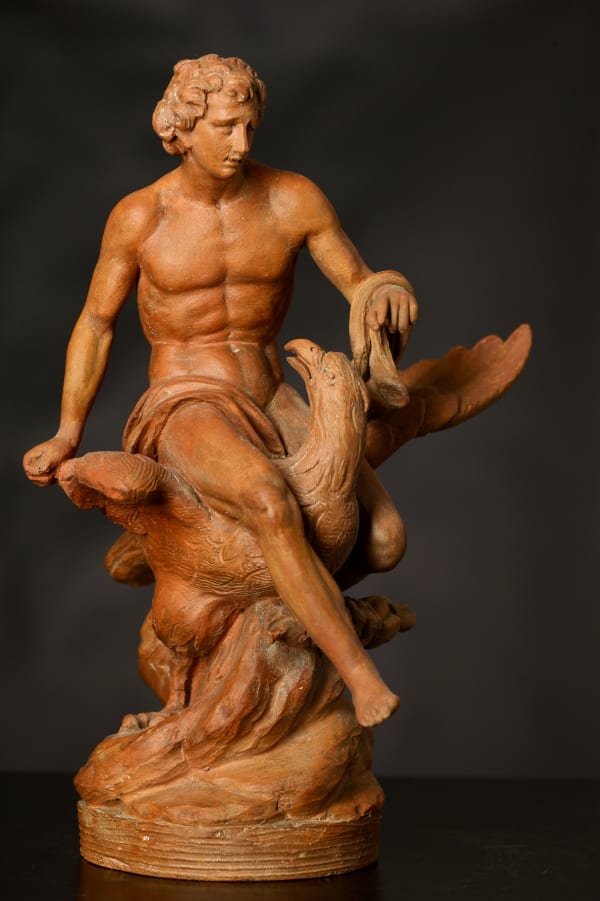Louis Royer (Mechelen 1793 - 1868 Amsterdam) (attributed)
Louis Royer was born in Mechelen in 1793. After studying at the local academy, he was apprenticed to the sculptor Jan Frans van Geel, who trained him in the tradition of the late baroque. Like his mentor, Royer was also influenced by neoclassicism. Later on, he went to Paris to continue his studies. Around 1820 he went to Amsterdam, where he won the prestigious Prix de Rome in 1823, allowing him to study in Rome for four years. While in Rome, he worked with Bertel Thorvaldsen and in the workshop of the recently deceased Antonio Canova, coming more and more under the influence of neoclassicism.
In 1827 Royer returned and moved to The Hague, where he became sculptor to the court. Shortly after he was also appointed as director of the Royal Academy of Arts in Amsterdam. In his day, Royer was the most important Dutch sculptor, known as the "Dutch Canova". The present work, a small bozetto representing Chronos (Time) taking away Beauty, compares very favourably to Royer's Deluge from ca. 1833, now in the Rijksmuseum Amsterdam (object no. BK-NM-9003). With its fusion of late baroque and neoclassicist styles, it clearly shows the influence of his master Jan Frans van Geel.
Provenance
With Kunstzalen Vecht, Amsterdam;
Private collection, Antwerp.
- X
- Tumblr

